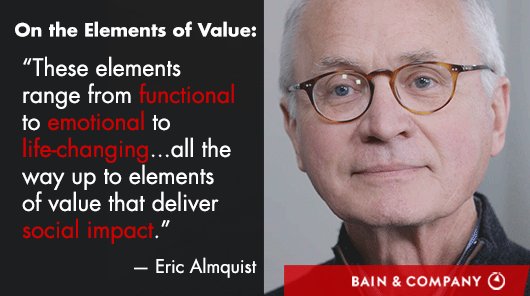
Warren Buffet, the ‘Oracle of Omaha”, is a mega celebrity in my home state of Nebraska. His reputation for value investing has reached mythical proportions.
Investopedia stated in a 2015 article that $8,175 invested in Berkshire Hathaway in 1990 was worth more the $165,000 by September 2013 as compared to $42,000 in the S&P 500.Needless to say, his value investment philosophy has made investors in his company a lot of money.
Warren Buffet is known worldwide for being a genius at value investing. Value investors buy securities that are currently undervalued by the market based on their intrinsic worth.
Investopedia goes on to say “Buffet chooses stocks solely based on their overall potential as a company…Buffet seeks not capital gains but ownership in quality companies.”
Therapists regardless of their employment situation can learn a lesson or two from Mr. Buffet on value investing.All therapists need to take ownership of their own value regardless of their employment situation. You can do this by understanding patient’s hierarchy of values and a few simple business fundamentals.
Value vs. Cost of Care
When patients evaluate different healthcare services, like physical therapy, chiropractic or massage, they weigh the perceived value they’ll receive against the cost of care.
Declining reimbursements have led some providers to focus on generating revenue by seeing more patients. The easiest way to keep ahead of rising overhead is to decrease treatment times and utilize assistants and techs to deliver care. However, there comes a point where consumers perceived value of the service diminishes. How many times have you heard patients complain when they only got 3-5 minutes of the physician’s time? In the consumer’s eyes, the provider’s service wasn’t worth their exchange of time, money and energy.
What patients’ value can be much more challenging to pin down than the charge per visit. Value is often in the eye of the beholder. However, rigorous research into understanding what consumers’ value can be used to compete by offering an exceptional patient experience.

30 Elements of Value
Eric Almquist and researchers at Bain & Company have identified ’30 Elements of Value‘. They categorize these elements into four groups resembling Maslow’s Hierarchy of Needs. You might find them useful as you think about the nature of the value you offer. The authors have created an extremely effective visualization of the 30 Elements of Value. Click on the link to get a quick animated overview of their findings.
Healthcare services like physical therapy deliver fundamental elements of value that relate to four kinds of needs:
1. Functional
2. Emotional
3. Life Changing
4. Social Impact
Three decades of research has found in general, the more elements provided, the greater perceived value and the higher the company’s revenues. Similar to Maslow’s pyramid of needs the four categories of value have been placed in an ascending order of impact.

In your ‘quest for value,’ you might find their description of your patients needs helpful in differentiating yourself from other practices. I think we all agree there is no substitute for quality care and helping patients get better. All things being equal, making value a priority in a couple of key elements can be a great growth strategy.
Deliver What People Really Value
There are different ways to deliver value. We should strive to include some of the higher elements on the pyramid. Our patients might experience a breakthrough if we can tap into some of the life-changing and social elements.Here are a few practical suggestions on how to put the value elements to work for you:
- Examine the 30 Elements of Value pyramid and thoughtfully write down the answers to these questions:
Functional- What do we help people do?
Emotional- How does it make people feel?
Life Changing- How does it change people’s lives?
Social Impact- What value do we add to society?
- Identify your top three core values that originate from your mission statement. Focus on your strengths. Avoid the temptation to work on several elements at the same time.
- Emulate successful companies. Don’t limit your research to only healthcare companies like WebMD or CVS Health but explore companies like Fitbit or Amazon. Learn how they use the elements to create consumer satisfaction and loyalty.
- Don’t settle for functional needs alone. Target elements near the top of the pyramid to offer life-changing experiences and social impact.
Setting yourself apart from the competition by providing “better” care is not enough. Better value is proven through tangible results.
Examples:
For example, your clinic might initially focus on elements simplify and connect by provided online intake forms and a welcome video for a remarkable patient onboarding experience.
Add a celebration and gift when patients graduate from therapy (fun/entertainment, rewards me) as they transition into your group wellness programs (motivation, affiliation & belonging)
By exploring the many elements of value could open your eyes to the remarkable ways in which you already meet patients’ deepest needs. You can develop new elements of value to deliver your existing services even better.
Value-added services must eventually prove their effectiveness by increasing patient satisfaction, loyalty and revenues. Incorporating more elements of value into your practice will work when leaders make value a priority and use it as a part of a long-term growth strategy.
Knowing what patients really want doesn’t have to be mysterious. The 30 elements of value make it much easier to emphasize the emotional and psychological needs of your patients. The Elements of Value Pyramid could help you creatively enhance the value you already provide.

––– Comments
Paul Potter
Commented • July 7, 2017
Nick, good luck with your research paper. The nice thing about the value pyramid is that it's blind towards all professions. It's consumer-centered rather than provider-centric. As you pointed out the combination of value-centered, evidence-based practice is hard to beat. Paul
Nick
Commented • July 6, 2017
Paul, I am currently taking an English Research course, and am researching the quality of care of Physical Therapy vs Chiropractic care. I am required to post my summary of my research so far for publication in some way. Upon researching I came across your article and I would like to post my summary to your blog. My argument is that Physical Therapy delivers a higher quality of care than Chiropractic services for acute and chronic injuries because it is more comprehensive, safer, and longer-lasting. I have been finding that Physical Therapy has a greater community outreach as a profession and encourages better health and wellness Giving the community tools to improve their fitness as well as education on prevention of many common disease processes is an excellent way to prevent illness and injury instead of only treating an injury once it occurs. Over time it appears the Physical Therapy profession has made a great effort to continue towards evidence based practices with functional outcome measures. I have found that most research done in regards to Chiropractic care are subjective and anecdotal. I found your article helpful in the 4 main elements of value, and how that relates to patient care. The ability to adapt treatments according to the patients needs is one that is invaluable in the physical therapy field, I have not found that Chiropractic care has the same ability to adapt treatments due to the nature of the manipulations needing to be performed. Thank you for allowing me to post my comments to you regarding my research paper.